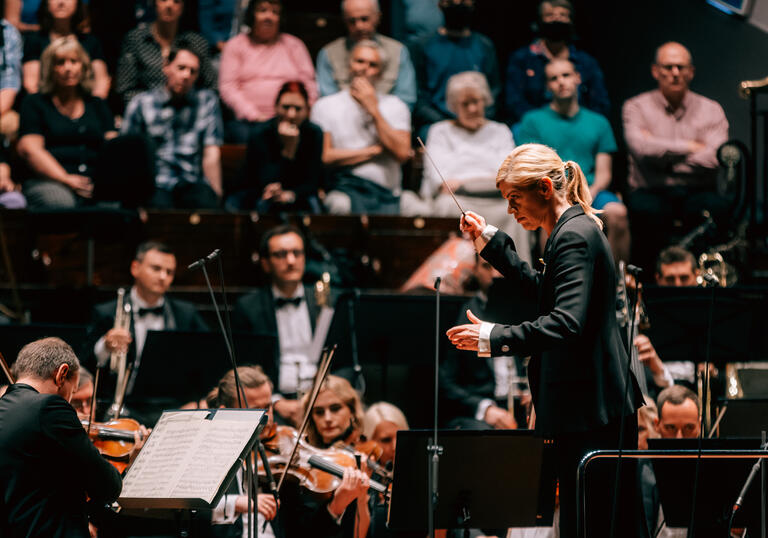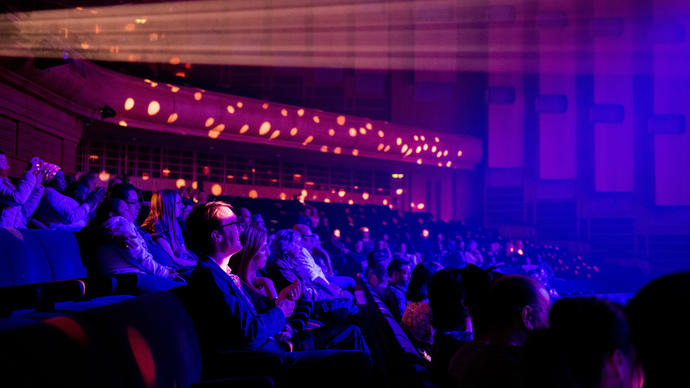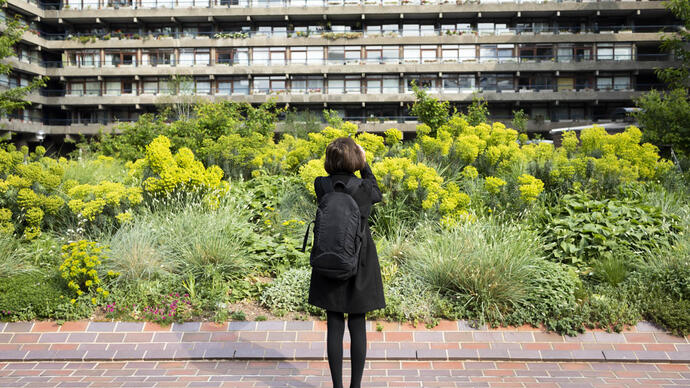A passionate nationalist, Giuseppe Verdi (1813–1901) dreamed of the time when his divided and oppressed Italian homeland would throw off foreign domination and unite as one country. The slogan ‘Viva Verdi!’ became a nationalist rallying cry in the composer’s own lifetime, the letters of his name taken to spell out ‘Vittorio Emanuele, Re D’Italia’ (Vittorio Emanuele, King of Italy), anticipating the time when the then King of Sardinia would ascend the throne of a united Italian nation. But Verdi also knew that the two great themes of Italian grand opera are Love and Death, and his music abounds in both, expressed in gripping theatrical drama and strings of glorious melodies. There’s plenty of both in the overture to the aptly named La forza del destino (‘The Force of Destiny’), which sets the scene for the opera with remarkable economy of means, while also offering a compelling depiction of the action and consequences of pitiless fate.
Yevhen Stankovych (born 1942) wrote his Second Violin Concerto in 2006, at a time when his Ukrainian homeland had achieved its long yearned-for independence from Russia, and a mood of cautious optimism had begun to take hold. But the character of the concerto is dark and anguished, with a sense of foreboding right from the start. Personal grief played a part here – Stankovych had already lost several close friends that year; but those losses had heightened his sense of how vulnerable good things can be, and of how destructive forces are always with us. In his long career, Stankovych had had several run-ins with the Soviet authorities, whose attitude to anything that smelled of Ukrainian nationalism was fiercely paranoid. The Soviet Union may have ceased to exist, but the imperialist attitudes that pervaded its thinking had proved more enduring. Stankovych knew well enough how his newly independent country’s aspirations would be viewed in Moscow.
Working closely with the violinist Dmitry Tkachenko, Stankovych created a concerto in which lyricism may be centre stage, but its a mood that often feels under threat. There are three movements, on a broad slow–fast–slow pattern, but they’re so closely interwoven that the concerto feels more like a single outpouring, sustained by the need to express personal and shared grief. Two folklike themes play a key part in the drama: the melancholic song for clarinets and bassoon that begins the Largo finale, and a rocking, sad, lullaby-like motif in triplets that emerges earlier on and is played by the soloist at the very end, in a fragile pizzicato – human lyrical aspiration survives, but only just.
Just as Verdi’s chorus ‘Va pensiero’, from the opera Nabucco, has become the unofficial national anthem of Italy, so the simple but profoundly eloquent Melody by Myroslav Skoryk (1938–2020) has been adopted as a wordless national hymn in his native Ukraine. It was originally written for flute and piano in 1982, for a Soviet film about the Second World War. The Soviet authorities had wanted to put a negative spin on Ukrainian nationalism, but Skoryk composed with his own people’s harrowing loss in mind, especially the catastrophe of the Holodomor – the famine deliberately engineered by Stalin in the early 1930s, which resulted in the deaths of millions of Ukrainians. For all the obvious intensity of feeling, Melody is remarkably dignified, which only made its effect all the more telling when it was used by President Volodymyr Zelensky in the video accompanying his 2022 address to the United States Congress. Since then it has been played all over the world as gesture of musical solidarity.
The feelings of Ludwig van Beethoven (1770–1827) about Revolutionary France’s military hero Napoleon Bonaparte wavered from the start. At some stage he made the decision to dedicate his Heroic Third Symphony to Napoleon. Then, in 1804, Beethoven heard that Napoleon had proclaimed himself Emperor, and he tore out the dedication in fury. The printed title page stated simply: ‘Sinfonia eroica, composed in memory of a great man’. That ‘in memory’ is very telling. But Beethoven’s belief in the possibility of human beings transforming their political destiny proved more robust, and that belief resounds throughout the Eroica Symphony. The first movement is one of Beethoven’s most truly heroic creations, brilliantly conveying the effect of epic conflict. It ends in triumph – or at least the promise of triumph; which only makes the contrast with the sombre Funeral March that follows all the more extreme. This movement culminates in a depiction of cathartic grief, after which the music almost literally breaks down.
An exhilarating Scherzo, with virtuosic fanfare-like horns in the central Trio section, is followed by an epic set of variations on a skeletal pizzicato figure, heard first in the bass. This stupendously ambitious finale blends elements of Classical variation, sonata form and fugue into a new kind of dynamic super structure which finally grasps the triumph promised in the first movement. Beethoven knew he had achieved something special here. Years later, when asked which was his favourite among his symphonies, he replied without hesitation, ‘The Eroica’.
© Stephen Johnson



